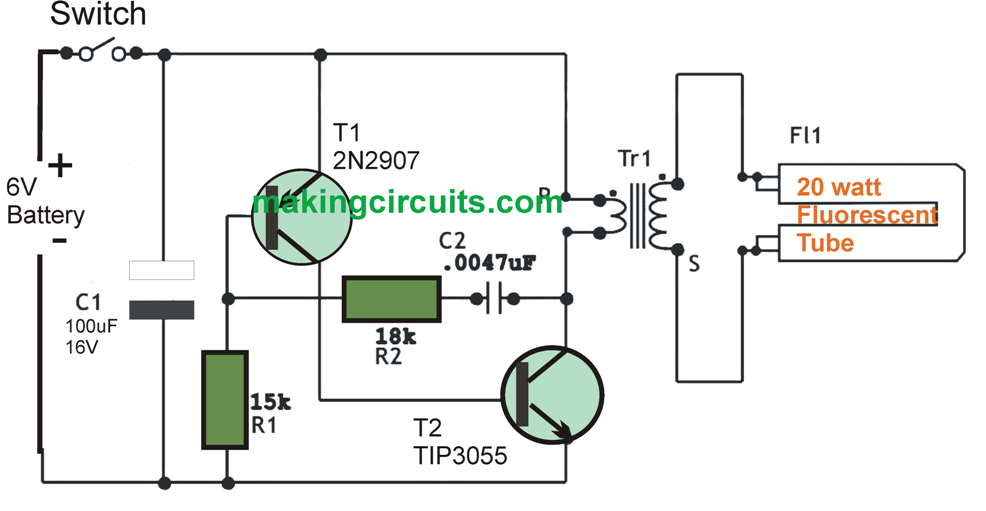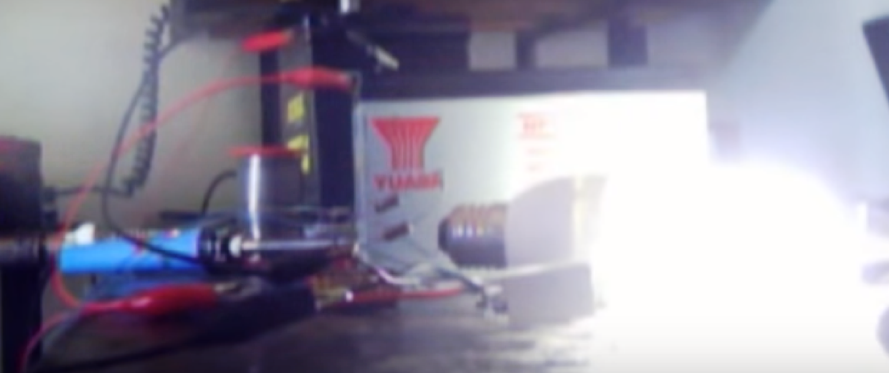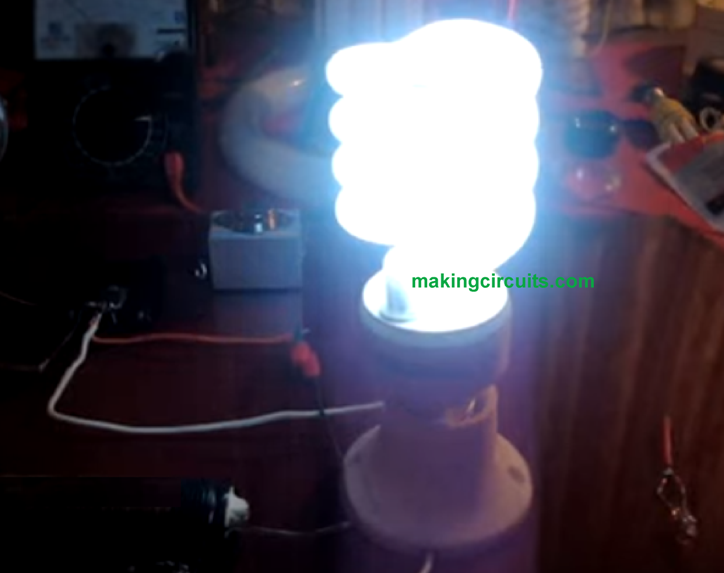In many rather daily occasions many of us may possibly be caught up over a power outage conditions (no electrical power on evenings). Ooh how extremely annoying evening ! ... absolutely no view of anything whatsoever and youngsters are moping and crying ... oh yea may well ... my oh my may perhaps.
Therefore for just a few moment - last week; I actually tried a defective personal computer power accessory unit, disassemble this and apply certain decent component to this and connect and developed to build a 6v DC 20 watt Florescent Lamp Driver Circuit
This specific device meant to generate a 15 watts fl lamp illumination originating from a defective economical CFL - which usually not necessarily difficult and could be located within our residence.
In this article you will find the schematic diagram :

PART LIST =
R1 = 15K Ohm / 0.5W
R2 = 22K Ohm / 0.5W
C1 = 100uF / 16V
C2 = 0.0047uF / 4n7F / 4.7KpF
T1 = 2N2907/ any 500mW PnP General Purpose Transistor
T2 = TIP3055 / or any TO220 3A NpN Switch Mode Transistor
Tr1 = Ferit Core Transformer. 15w 0.8mm magnet wire Primary winding and 300w 0.5mm magnet wire Secondary winding (rewinding from cpu psu transformer ! ).
S1 = Switch
Bat = 6V 4AH cell gel batery
Basicaly this 6v DC 20 watt Florescent Lamp Driver Circuit is a self-oscillating on ~ 25-35 KHz. with R2 and C2 as frequency dependen parts.
Here photo unit I've built :

and one more image of the unit energizing a 15 watts cfl lamp portion only. Observe how brilliant the cfl light possess using just 6V battery cell gel ! :

With around 100mA usage this particular device can function for approximately several hours before the battery may decrease it voltage to ~ Three volts.
WARNING =
THIS DEVICE CAN EASILY DEVELOP SUBSTANTIAL VOLTAGES WITHIN THE SECONDARY WINDING OF THE TRANSFORMER ! NEVER EVER TOUCH WHILE THE BATTERY IS ATTACHED WITH THE DEVICE ! WORK WITH EXTREME CAUTION !
What is the output voltage? am I right to assume it’s 12/15vdc?
It will be around 300 V AC
Thanks for your help[ Admin
Transformer number of turns: do you mean 15 windings x 0.8mm wire for PRIMARY winding, and 300 windings x 0.5mm wire for SECONDARY???
Thanks + regards
Yes that’s correct!
Where from can i buy the proposed transformer for this project, as well as an appropriate breadboard to complete the project
Kind regards
Al
You will have to build the transformer at home…breadboard will need to be purchased from the market.
Transformer details required
No of turns on primary and no of turns on secondary ?
It is given in the article!